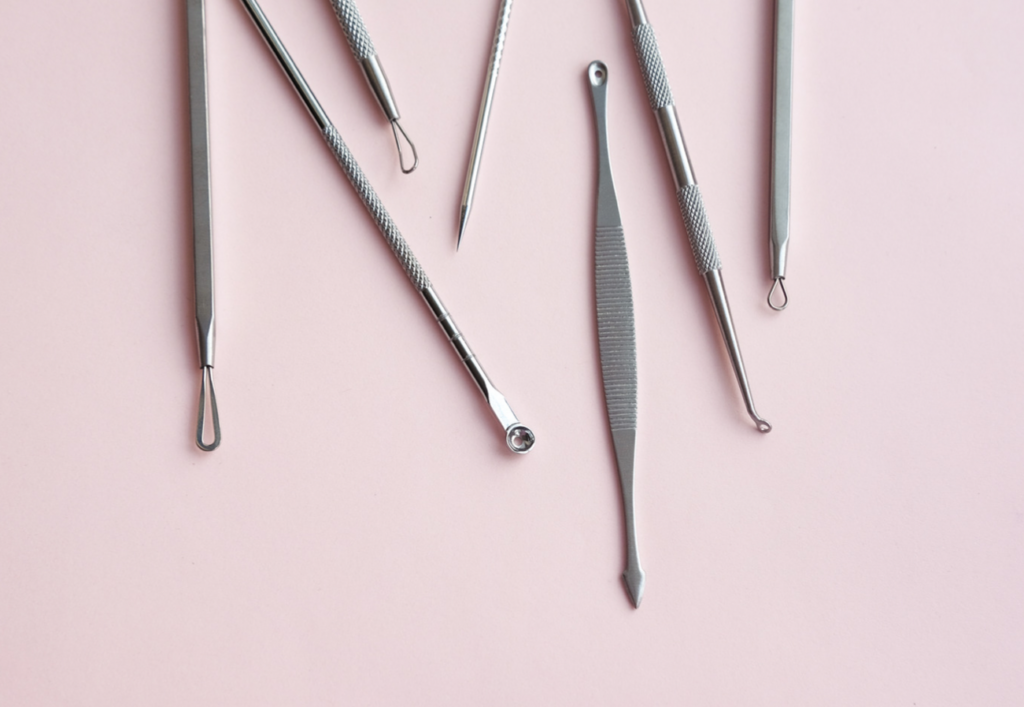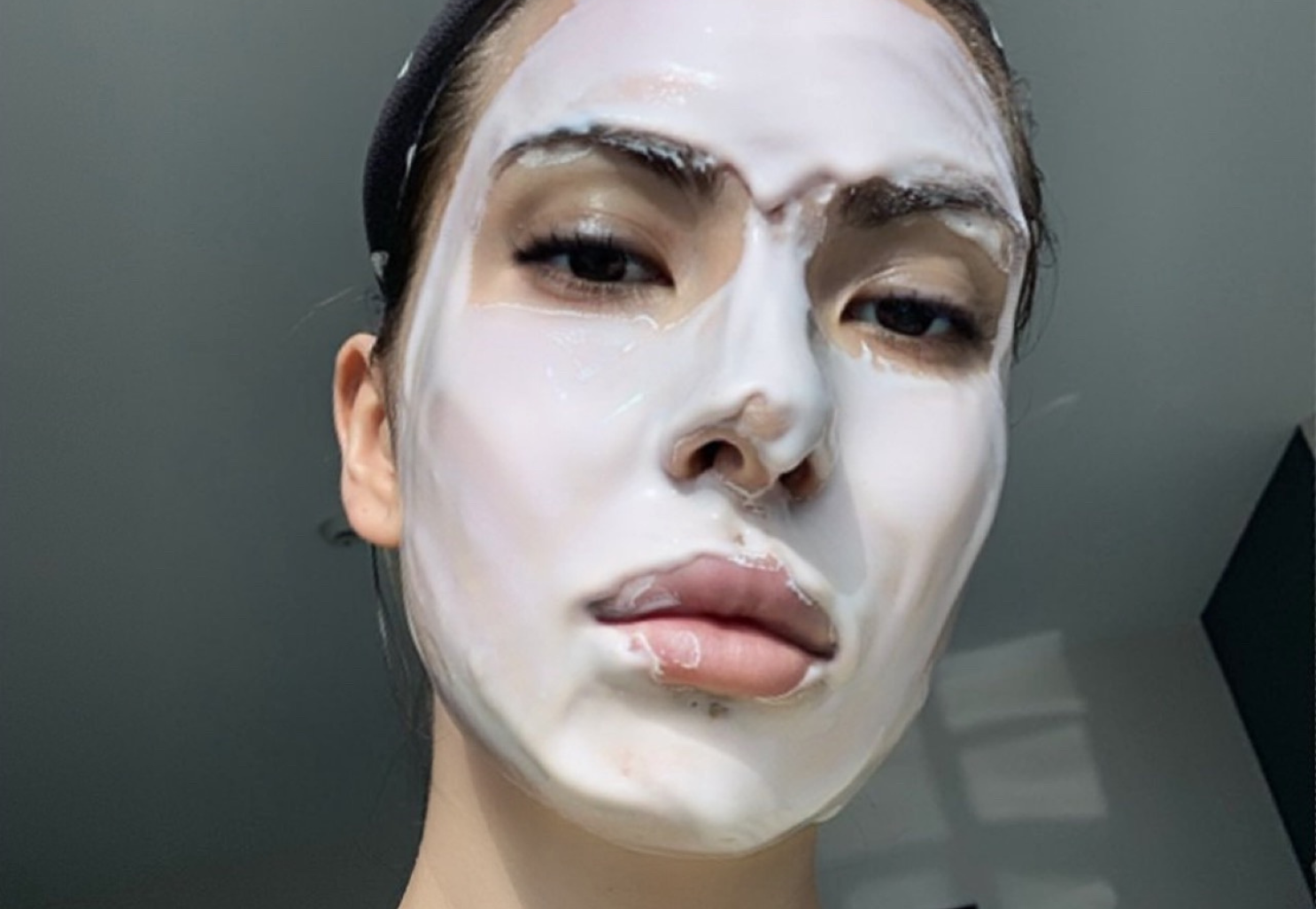Based on my experience in beauty therapy and personal struggles with acne, I came up with this simple guide to homecare routine and salon treatments for acne-prone skin. Choosing the right products and treatments can be intimidating, but knowing the guidelines can solve half of the problems. All these steps and treatments helped me keep my acne at bay for many years, so I hope it will give you some ideas of what to look for on your journey to clear your skin.
Homecare
Your home care is as crucial as your diet. If you are on a budget and need to choose between purchasing skincare or visiting the salon, I recommend choosing first. But If you are not sure what your skin type is and what type of acne you have, you should consider getting the help of an esthetician or dermatologist to choose the right products for your skin.
Down below, I listed the crucial steps of any at-home skincare routine. With the right products, these steps will keep the skin properly cleansed, moisturised and protected. Just remember that any skin condition requires immense patience, so always make sure you give time to your skin to adjust to new products.
Cleanse
Thoroughly washing your face in the evening and the morning helps combat excess oils, reducing the chance of developing some new spots. As an esthetician who struggled with acne, I always prefered gentle cleansers over acne-fighting cleansers to maintain a balanced pH and avoid overdrying.
Exfoliate
I’m not a fan of any physical exfoliants, as I prefer chemical peels. At-home chemical exfoliants are mild versions of in-salon chemical peels and can be purchased at many beauty shops. As staple anti-acne ingredients in your chemical exfoliants, you should look for glycolic and salicylic acids. These type of products usually come in the form of a toner, which makes easy to use.
However, it’s important not to overuse acids, as it can lead to skin inflammation due to over-exfoliation. In addition, over-exfoliation can damage the skin barrier, which leads to decreased ability to retain moisture and breakouts.
Mask
When it comes to masks, I like to choose simple natural ingredients. Going through the endless options of skincare brands led me to the DIY face masks that are affordable and effective. I never expect masks to be life-changing and more of a tool for self-care and wellness. Most masks provide calming or cleansing effect, which is exactly what you get from the options I listed below.
For purifying effect, I like to use natural clay powder. There are many different types of clay, and some of their health benefits can vary, but they all do the same thing – soothe and heal the skin by removing excessive oil. The clay colour depends on which part of the world clay has been harvested and usually comes in pink, white, green, blue and black. I am a big fan of Russsian clay, as I find it very cleansing but not overdrying for the skin.
To detox my skin, I like to use an algae-based mask. Most of the green superfood powders you can find at the health store can be used as a mask. My favourite choices are spirulina and chlorella, which belong to the algae family. Chlorella and spirulina powders are packed with phytonutrients that help to repair skin cells and improve appearance. I like to mix algae powders with aloe vera gel for its antibacterial and hydrating properties.
For a more lifting effect, I go for an alginate mask. Alginate is a popular skincare ingredient used in spa salons. It’s formulated with alginic acid salts extracted from brown seaweeds. These salts can absorb water quickly and bind with it, forming a viscous gum. When modified into the mask and applied to the face, it leaves a tightening effect on the skin. Regular use of alginate masks makes the skin smoother, reduce puffiness and improves face contour.
Treatment
Treatments play an important role in the skincare regime, especially if acne or skin ageing are the main concerns. There’s really no need to over complicate your skincare routine, but sometimes extra steps are essential to achieve the best results.
Vitamin C serum might not prevent your skin from breakouts, but it will make it more durable in the long run. Vitamin C is a potent antioxidant, and it helps to protect your skin from sun damage. Apply it every morning before the sunscreen.
Also, it would be best if you introduced Retinol to your skin on the nights when you are not using your chemical exfoliant. Retinol is a form of Vitamin A and a powerful skin booster. It’s antiaging, and just like Vitamin C plays a vital role in collagen production. Plus, it’s great for fading those post-acne scars.
Another ingredient that you should look out for is Azelaic acid. Its usually derived from grains like barley, wheat, and rye, and it works on skin as a gentle leave-on exfoliant that helps unclog pores and refine skin’s surface. Products containing Azelaic acid can help to even out the skin’s texture and prevent future breakouts.
Moisturise
Moisturiser is a crucial step in your skincare routine. There are many options available on the market, and they can be either in the form of a gel, cream or oil. I like to go for something hydrating and mattifying and be used as a primer under the makeup.
SPF
Sunblock must be an essential step in your daily skincare routine regardless if you have acne or not. It protects the skin from UV rays and prevents the appearance of dark spots. If you have oily acne-prone skin, choose sunscreen that is light in texture – it will reduce the risk of clogged pores and breakouts. Also, look for sunscreens designed for acne-prone skin and contain ingredients like zinc or zinc oxide that are often used to treat acne.
Salon Treatments

Professional acne extraction
When acne extraction performed correct, it can do wonders for the skin. Extraction techniques vary from specialist to specialist. If you find the right one, it can help you carry yourself with more confidence while dealing with your skin issues. Acne extraction works excellent for a comedonal type of acne; it’s when you get those hard little bums that can sit deep in the skin and either have a black or white surface.
During extraction, the specialist uses the hands or a sterile tool to pull the skin and squeeze out the pimple. By unclogging the pores, you get a smooth canvas for your products and makeup. It’s not an acne solution, but it can help to prevent future breakouts.
Chemical peels
Peels are resurfacing solutions used to target fine lines, sun damage, breakouts, discolourations and scars. It’s a chemical exfoliation process that makes the top layers of the skin shed. Many peels are based on similar active ingredients like glycolic acid, salicylic acid, lactic acid etc. The difference between at-home and professional chemical peels is strength or concentration. Most chemical peels you can buy from over the counter won’t make your skin peel visibly, where after the salon procedure, you might experience profound shedding.
Light-duty chemicals peels play an essential role in my own skincare routine. In Phuket, I get a peel done every month at Healthy Skin Clinic as a part of their “Detox Touch & Glow” treatment. They use an active blend of lactic, glycolic and salicylic acid, which gently exfoliates my skin and helps with a detoxication process.
IPL for acne
It might be a surprise for you, but Intense Pulsed Light therapy can be used on the skin to treat acne and quite effectively. When the light flashes over the treated area, it triggers a biochemical response that eventually kills bacteria within the pores. It’s a non-invasive procedure and, in some cases, can treat inflammatory acne with a great outcome. The procedure is not suitable for everyone, so make sure to check all the pros and cons with your skin therapist.
Hydrafacial
You should consider this treatment if you have mild/occasional acne and post-acne scars, and hyperpigmentation is your primary concern. This treatment is focused on exfoliation of skin’s debris, drainage of fluid buildup and extraction of clogged pores while also plumping and hydrating the skin. Instead of all of these being performed by hand, the esthetician uses a medical-grade device with different attachments. The treatment also includes acid peels and serum applications that are infused into pores with a pen-like device.
This procedure is effective for acne skin, but don’t be surprised to see new breakouts post-treatment. As in congested skin, this procedure will encourage underlying breakouts to come through.
